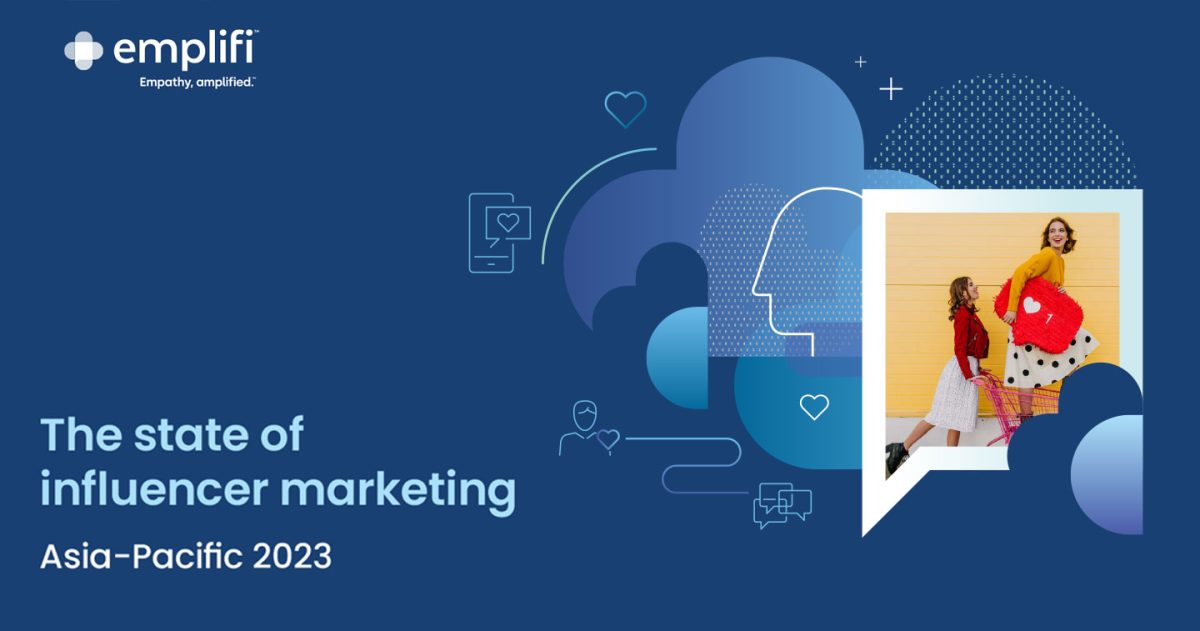SINGAPORE – Emplifi, a leading customer engagement platform, released “Asia Pacific: State of Influencer Marketing Report,” a comprehensive look at business-critical influencer marketing trends for 2023. The report includes influencer marketing performance analytics across social platforms, a detailed analysis of Instagram’s influencer landscape with supporting data, and findings from a survey polling popular influencers across industries in Asia Pacific.
Influencer marketing has experienced an upward trajectory since its inception, and the industry in Southeast Asia is estimated to reach $2.59 billion by 2024.
“We live in an age of authenticity. Customers want purposeful transactions, while brands want cost-effective strategies to reach and engage with their audiences,” said Varun Sharma, Emplifi Senior Vice President for JAPAC and MEA. “Influencer marketing provides brands with the opportunity to connect with customer segments and drive measurable results. While we’ve seen an increase in influencer marketing campaigns in Asia, there is still plenty of room for brands to harness its potential by tapping into the right partnerships on the right platforms.”
Key Findings of Emplifi’s Asia Pacific: State of Influencer Marketing Report
- Instagram has long been the leading platform for influencer marketing, with 90% of influencers active on the social network. However, TikTok is making its mark, with 66% of influencers active on the app, and is projected to become a strong contender for influencer marketing campaigns. Only 4% of the influencers look to Twitter or Pinterest as a platform for potential brand partnerships.
- 6% of influencer content is sponsored, peaking in the months leading up to festive holidays. There has been a slight decrease in sponsored content year-over-year which is likely the result of marketing budget cuts.
- Comparing influencers of different audience sizes, the larger the influencer, the less frequently they share sponsored content on Instagram. On average, XS influencers (10,000 followers or less) post 80% more sponsored content than L influencers (100,000 – 1 million followers) or XL influencers (1 million followers or more) on Instagram.
- According to Emplifi data, XL influencers (1 million followers or more) and L influencers (100,000 – 1 million followers) post most frequently on Instagram in Asia. Though larger influencers post a higher volume of content, brands shouldn’t shy away from influencers with a small base of followers as they have the potential to help stretch a brand’s campaign budget even further.
Macro Influencers Are Embracing a Video-First Strategy
TikTok and Instagram Reels have emerged as highly sought-after platforms for a diverse range of demographics seeking entertainment, education, and brand discovery. This presents a significant opportunity for fresh influencer content.
L (100,000 – 1 million followers) and XL (1 million followers or more) influencers favor video on Instagram, sharing, on average, 31% more video content compared to XS (10,000 followers or less) and S (10,000 to 50,000 followers) influencers. This trend could be attributed to resource availability, as video content creation typically demands more resources. The widespread demand for short-form video content from users has led brands to increase the number of Instagram Reels, and a subsequent boost in sponsored posts from influencers via Reels.
Influencer Marketing’s Untapped Potential by Industry
Based on Emplifi’s data, some industries are more likely to benefit from an influencer marketing strategy than others. For example, alcohol brands in Asia have the potential to gain 25 times their current reach by partnering with an influencer. Data reveals that collaborating with influencers can significantly boost the effectiveness of campaigns, as influencers achieve approximately 4.8 times more audience engagement (likes, comments, shares, etc.) on their average posts compared to those of alcohol brands.
Similarly, accommodation brands, a subset of the hospitality industry, can benefit from partnering with influencers, as they have the potential to expand their social media reach by up to 20 times and achieve 4.3 times more audience engagement compared to their current performance. Close behind accommodation, Asian healthcare brands, including those specializing in medical products like eyewear, med tech, and medication, could potentially increase their current reach by 20 times through influencer collaborations and 3.4 times the engagement compared to non-influencer campaigns.
The rise of virtual influencers
Influencer marketing and the creator economy have begun to see shifts toward artificial intelligence (AI) and virtual reality. With this shift has come the emergence of the virtual influencer – an influencer without a physical presence that exists online through artwork, social media, or AI. While it’s still early days for virtual influencers, one Asian personality attracting a large followership is Thalasya Pov (@thalasya_) from Indonesia.
Virtual influencers appeal to brands for a variety of reasons, from connecting with the modern consumer to being a cost-effective strategy that provides more flexibility than investing in real-life influencers and creators. According to Gartner, CMOs are expected to dedicate 30% of their influencer and celebrity budgets to virtual influencers by 2026. Brands in various industries, like Home Decor, Fashion, Beauty, and Hospitality, can tap into the innovation and reach of virtual influencers.








